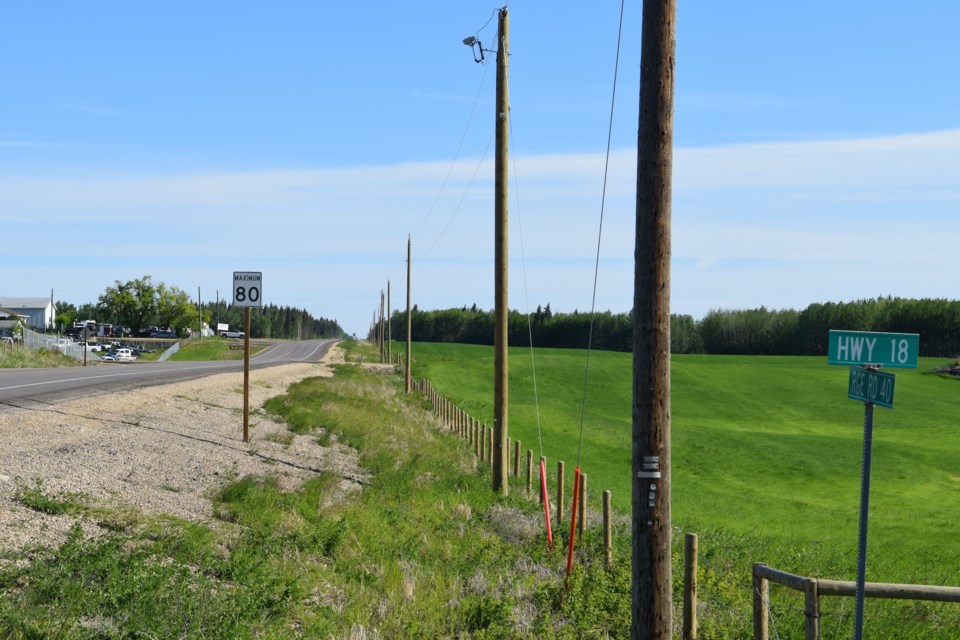BARRHEAD - County of Barrhead councillors and staff will soon have more information to base their road-based decisions.
On June 4, councillors awarded ROHI Engineering a $122,600 contract to conduct a rural road study.
Council set aside $125,000 in the 2024 budget for the project.
Public works manager Travis Wierenga said the last time the county commissioned a road study was more than 20 years ago, in 2001. The information garnered from the study, he added, helped councils justify several major paving projects, including Range Road 40 (Barrhead Golf Club, Barrhead Auto Parts and Glenreagh), Township Road 604 (Bloomsbury), Township Road 615A (Neerlandia East) Township Road 590 (Correction Line), Township Road 592 (Airport) and Range Road 22 or Dunstable south to Nakamun.
"Conditions have really changed as far as our road network goes, so it is time to update the information in the 2001 study," he said.
Wierenga said the county engaged three engineering consulting firms, WSP (formerly Wood/AMEC), SE Design and Consulting and ROHI Engineering.
Wierenga said the information the county asked the consulting firms to provide includes local road classifications, design standards (i.e. what standards roads should be built to), pavement rehabilitation and maintenance strategies, and creating a bridge inventory and maintenance plan based on the Alberta Transportation database, determine and help develop a critical local road network and perform traffic counts on those roadways and accurate mapping of the municipality's road system.
All three companies the county approached provided bids, the lowest being ROHI Engineering at $108,000 for their base study, with an option for traffic counting at 20 intersections for $14,539; WSP was next at $122,800, while SE Design and Consulting came in at $195,000, with an option for environmental regulatory guidance and a geotechnical investigation for $51,600.
"There is no exact template for a rural road study," he said. "The end result should be a tool that [public works staff] and council can use when making decisions."
Wierenga added that each company took a slightly different approach to what information their study would include and how it was presented.
He said the WSP was essentially a continuation of the plan commissioned in 2001.
"They do address all the deliverables we asked for, and they would update the bridge inventory," Wierenga said, but they don't include a detailed bridge maintenance plan.
The WSP bid also included traffic counts at 30 road intersections.
Wierenga said the SE Design proposal would continue where the 2001 study left off, collecting and analyzing additional data.
"They also want to look at drainage and know what roads have flooded in previous years, factoring that all in," he said.
The SE Design submission proposed a detailed review of 20 key county roadways chosen in collaboration with the municipality, factoring in traffic counts.
He also noted that the company planned a detailed inspection of paved roadways using a "matrix rating" system.
Wierenga said the bid public works recommends, ROHI Engineering, would take a non-traditional approach.
"They would collect all the information per a traditional study, but rather than just compiling it into a book that you can use for a while, they are proposing that they put all their data into a Microsoft database, which would then become the property of the municipality," Wierenga said.
He said this approach would benefit municipal staff by allowing them to update the information as they complete projects.
Wierenga also noted that the database could be integrated into the municipality's geographical informational mapping system.
He added that a one-day workshop would decide the road rating criteria.
"How much weight they would be limited to, traffic, width, height, drainage, things like that. They would then go out and drive all of our roads, collect all the information for analysis," he said.
Wierenga said one advantage of having ROHI Engineering create the database is that it would help create an asset management plan.
"One way or another, we need to collect this information," he said. "Whether we do it now or on our own over the next 10 years, collecting the information digitally, coming up with a system to organize it and how to incorporate it into an asset management plan."
Coun. Walter Preugschas asked how accurate a traffic count from any of the companies would be, saying countless factors come into play.
"There are seasonal, weekday, weekend, and time of day differences," he said. "How does one traffic survey account for them all?"
Wierenga replied that the county does its traffic counts over two weeks in the summer to try to encapsulate as many of the actual traffic patterns as possible.
However, when private companies conduct traffic counts, he said, they usually visually count the number of vehicles for a short 12-hour period.
"I don't understand all the nuances, but they have formulas they apply which help give them a more accurate picture of what is happening," Wierenga said.
Coun. Jared Stoik asked if any of the consultants would suggest which roads should have weight restrictions or even potential bans.
Wierenga replied that it would be up to the municipality to regulate road use but said that the information and road rating from a rural road study would help them make those decisions.
Barry Kerton, TownandCountryToday.com



